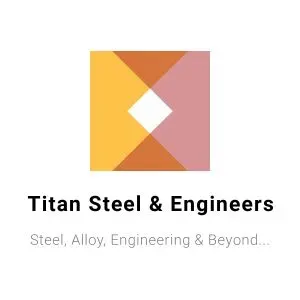piling machine price in india
Piling Machine Price in India
The construction industry in India is experiencing rapid growth, with infrastructure development at the forefront. One critical piece of equipment that plays a major role in foundational construction is the piling machine. But when it comes to investing in a piling machine, the price can hold significant weight in the decision-making process.
If you’re exploring piling machines for your next project, this guide will walk you through how pricing varies, the factors that influence these costs, and tips to ensure you get the best value for your money.
Understanding Piling Machines and Their Role
Piling machines are essential in construction projects that require strong foundations. These machines drive piles into the ground to offer structural support for buildings, bridges, and other infrastructure. With their ability to handle high loads and address challenging soil conditions, piling machines are indispensable in both residential and large-scale commercial projects.
But how much do they actually cost in India? To answer that, let’s first look at the factors that influence piling machine prices.
Factors Affecting Piling Machine Prices
Machine Type
The type of piling machine you choose significantly impacts its price. Here are the main types of piling machines and their typical price ranges in India:
- Hydraulic Piling Machines
Known for efficiency and precision, these machines use hydraulic systems to drive piles. Depending on brand and capacity, their prices range from ?25-50 lakh.
- Rotary Piling Machines
Equipped to handle large-scale projects with complex requirements, rotary piling machines fall on the higher end, between ?60 lakh and ?1.5 crore.
- Diesel Hammer Piling Machines
Traditional diesel hammer models, though slightly outdated, remain budget-friendly at ?15-30 lakh.
- Vibratory Piling Machines
Typically used for projects requiring faster operations, these range from ?20-40 lakh.
The choice of machine will depend on the project scope, soil type, and budget constraints.
Capacity and Size
Larger machines with higher piling capacity naturally cost more. For example, a small hydraulic piling rig might handle lighter loads and cost ?20 lakh, while a high-capacity machine for deep, heavy-duty piles can exceed ?75 lakh.
If your project demands significant depth or load-bearing piles, prioritizing capacity is key. However, always balance your project’s requirements with your budget to avoid overspending on unneeded features.
Brand Reputation
The brand you choose matters greatly in terms of both price and quality. International brands like Bauer and Liebherr often have machines priced higher due to their advanced technology and reliability. Their machines can range from ?70 lakh to over ?2 crore. On the other hand, local Indian brands, such as Surelia, offer high-value options with prices between ?20-?75 lakh.
While international brands provide cutting-edge features, Indian brands often shine on affordability and after-sales service availability, making them a great option for budget-conscious buyers.
New vs Used Machines
Should you buy a brand-new piling machine or consider a used one? Here’s how they compare:
- New Machines
Offer warranty, reliable performance, and access to the latest technology. However, these come at a premium that can stretch into the crores for high-end models.
- Used Machines
Can save you 30-50%, with a vibrating piling machine available for ?10-15 lakh second-hand. However, they may require extra maintenance and come with higher operational risks if the machine’s condition is poor.
Piling Machine Price Range in India
On average, piling machine prices in India vary widely based on type and brand. Below is a general price guide to help you get a sense of the costs:
- Small Hydraulic Machines: ?20-30 lakh
- Medium Hydraulic Machines: ?35-60 lakh
- Large Rotary Machines: ?75 lakh to ?2 crore
- Diesel Machines (Used): ?12-20 lakh
When compared globally, Indian machines tend to be relatively affordable, partly due to lower labor and manufacturing costs. For instance, a similar rotary piling rig in Europe could cost up to 25% more than in India.
Additional Costs You Should Consider
Transportation and Installation Costs
Getting your piling machine to the site and setting it up correctly adds to your overall expenditure. Transportation fees depend on the distance but can range from ?1-5 lakh. Installation, depending on complexity, may require another ?2-8 lakh.
Training and Operations
Operating piling machines often requires specialized training. Factoring in costs for operator training programs or hiring experienced operators is essential, typically ranging from ?50,000-?2 lakh.
Maintenance and Repairs
Proper machine upkeep is crucial to ensure long-term performance. Annual maintenance costs might add ?50,000-?5 lakh, depending on the machine type and condition.
Tips for Buying a Piling Machine
Research and Compare
Start by researching different machines based on your project requirements. Visit multiple dealers, compare features, and request demonstrations whenever possible.
Consider Long-Term Costs and ROI
Opting for a cost-effective machine now might lead to high running costs later. Carefully assess long-term costs like fuel efficiency, maintenance, and overall performance to calculate ROI. Investing in a slightly more expensive but efficient machine could save significant costs over time.
Check Warranty and After-Sales Service
Reputable brands provide warranties and strong after-sales support. Ensure the manufacturer or dealer offers readily available spare parts and a responsive service network. This will save time and money in case of breakdowns.
Making the Right Choice
Investing in a piling machine demands careful consideration of multiple factors, from type and capacity to additional costs such as maintenance and transportation. By understanding your requirements and carefully evaluating options, you can find the right balance between cost and value.
If you’re ready to make your purchase or want expert advice tailored to your project’s needs, reach out to trusted local dealers or manufacturers to explore machine options and pricing. With the right piling machine, your construction project will be set on a solid path to success.
